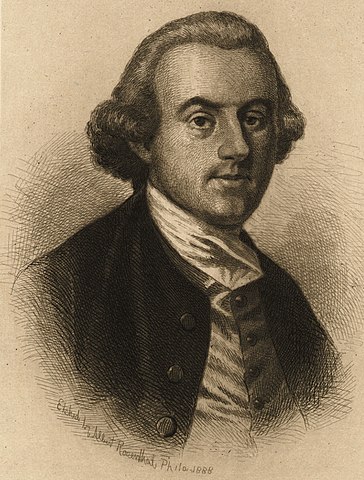
Daniel Carroll, a Founding Father from the State of Maryland, signed both the Articles of Confederation and the U.S. Constitution. He went on to become as one of the state’s first U.S. Representatives.
Early Life
Daniel Carroll was born on July 22, 1730, in Upper Marlboro, Maryland. Born into a wealthy Irish-Catholic family, he was educated at the College of St. Omer in France. Upon returning to the United States, he married Eleanor Carroll, a first cousin.
Public Office
While Maryland was under British rule, Carroll was prohibited, as a Roman Catholic, from holding public office. During the American Revolution, the restriction was abolished, and Carroll was elected to the Maryland Senate. He served from 1777 to 1781, helping the state assemble its military and raise funds to support the war effort
In 1781, Carroll became a member of the Continental Congress. After the other states agreed to cede their western land claims to Congress, he signed the Articles of Confederation on Maryland’s behalf.
Constitutional Convention
Although Carroll did not arrive at Constitutional Convention until July 9, he became a regular attendee of the proceedings. He spoke approximately 20 times during the debates. He strongly opposed members of Congress being paid by the states, arguing that “the dependence of both Houses on the state Legislatures would be compleat . . . .The new government in this form is nothing more than a second edition of [the Continental] Congress in two volumes, instead of one, and perhaps with very few amendments.”
Carroll served on the Committee of Trade, as well as the Committee on Postponed Matters. According to fellow delegate William Pierce, “Mr. Carroll is a Man of large fortune, and influence in his State. He possesses plain good sense, and is full confidence of his Countrymen.”
Carroll and Thomas Fitzsimons were the only Roman Catholics to sign the Constitution. After it was signed, Carroll vocally supported ratification in his home state, writing articles in local newspapers in response to anti-Federalists.
Later Political Career
In 1789, Carroll was elected to the U.S. House of Representatives. He voted for the federal government to assume state debts accumulated during the war and to locate the nation’s capital on the banks of the Potomac River. After completing his term in Congress, Carroll returned to serve in the Maryland Senate.
In 1791, his close friend, George Washington, appointed him to a commission tasked with surveying and defining the District of Columbia. Carroll’s ailing health forced him to retire in 1795. Carroll died May 7, 1796, at the age of 65.








